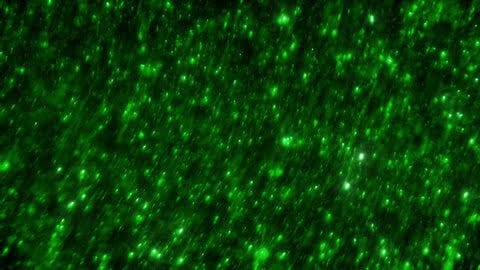Imagine a world where electricity hums quietly through your home—not from coal or wind, not from solar panels or nuclear plants—but from bacteria. Tiny, invisible creatures you can’t see, living and thriving in mud, wastewater, or your own backyard pond, silently generating energy. It sounds like the stuff of science fiction, but it’s not. It’s real. And it’s happening now.
Welcome to the mysterious and astonishing world of microbial fuel cells—a frontier where biology meets engineering, and life itself becomes the power source. These remarkable systems challenge everything we thought we knew about electricity. They invite us to see bacteria not as agents of disease or decay, but as engineers of energy, tiny power plants that could transform how we think about waste, sustainability, and the future of civilization.
What Is a Microbial Fuel Cell?
A microbial fuel cell (MFC) is a device that uses the natural metabolic processes of bacteria to generate electricity. In essence, it’s a biological battery—a system where microorganisms break down organic matter and, in the process, release electrons. These electrons can be captured and channeled to do work, just like those generated in a conventional power station.
But unlike fossil fuels or nuclear reactions, microbial fuel cells operate at room temperature. They don’t pollute. They feed on waste—human waste, animal manure, kitchen leftovers, industrial runoff. And instead of producing smoke or toxic ash, they produce electricity and clean water.
It’s not just efficient—it’s elegant. It’s nature’s recycling, supercharged.
The science behind microbial fuel cells is grounded in bioelectrochemistry. It explores the interface where living organisms and electric currents meet—a discipline as fascinating as it is unexpected. At the heart of every MFC is a community of microbes known as electrogenic bacteria—organisms that have evolved the ability to transfer electrons outside their cell membranes.
The Electricity in Microbes: A Hidden Gift
To understand how bacteria can generate electricity, we must first delve into the world of microbial respiration. Just like humans, bacteria need energy to survive. And to get that energy, they break down organic molecules, such as sugars and fats. In this process, known as cellular respiration, electrons are released and passed along a chain of molecules inside the cell. In most cases, these electrons end up combining with oxygen, forming water—a clean and elegant conclusion.
But some bacteria live in environments where oxygen is scarce or completely absent—deep underwater, in sediment, in sewage. Over millennia, these bacteria evolved a different trick. Instead of transferring electrons to oxygen, they developed a way to transfer them to solid surfaces—rocks, minerals, or metal. It was a matter of survival. And in doing so, they discovered electricity.
These are exoelectrogens, bacteria that can transfer electrons outside their cell walls. One of the most famous examples is Geobacter sulfurreducens, often found in river mud. When placed in the right conditions, Geobacter doesn’t just survive—it thrives by generating electricity.
Scientists realized that if these electrons could be captured, they could form an electric current. All that was needed was a system to move the electrons from the bacteria to a wire. That system is the microbial fuel cell.
Anatomy of a Microbial Power Plant
At its simplest, a microbial fuel cell consists of two chambers: an anode (where the bacteria live) and a cathode (where the electrons go), separated by a membrane. Inside the anode, bacteria feast on organic matter—such as wastewater. As they digest the nutrients, they release electrons and protons.
The electrons are captured by the anode—a conductive material, typically graphite or carbon felt. From there, they flow through an external circuit, creating an electrical current, before reaching the cathode. Meanwhile, the protons pass through the membrane to the cathode chamber, where they combine with the electrons and oxygen to form water.
The result? A flow of electricity powered entirely by bacterial metabolism.
The beauty of microbial fuel cells lies in their diversity. They can be scaled up or down. They can run on various fuels—food scraps, urine, industrial waste, even ocean sediment. They don’t need fossil fuels, and they don’t emit carbon dioxide. And because the bacteria can self-replicate, MFCs are, in a sense, self-repairing and renewable by design.
From Waste to Watts: Turning Pollution into Power
Perhaps the most transformative application of microbial fuel cells is in wastewater treatment. Traditional sewage treatment plants are massive consumers of energy. They use complex processes to break down organic material and remove pathogens—often at great cost to municipalities and the environment.
But microbial fuel cells turn this process on its head. Instead of using energy to clean wastewater, they generate energy while cleaning it. As the bacteria consume organic pollutants, they simultaneously purify the water and produce electricity.
Researchers at the University of Bristol and other institutions have built working prototypes of “urine-powered” fuel cells, capable of lighting up LEDs, powering small electronics, and even charging cell phones. Imagine a public restroom that uses its own waste to power its lights. It’s not just sustainable—it’s revolutionary.
In slums, refugee camps, or rural villages without access to centralized grids, microbial fuel cells could provide decentralized, off-grid energy. These devices could convert human and animal waste into electricity and clean water, transforming public health, reducing pollution, and empowering communities.
The Race to Scale: Challenges and Triumphs
Yet for all their promise, microbial fuel cells remain largely experimental. Scaling them for industrial use poses formidable challenges.
One of the main issues is power density. A typical MFC can produce only small amounts of electricity—measured in milliwatts per square meter. That’s enough to power a sensor or LED, but not a home. To reach larger scales, researchers are working to improve electrode materials, optimize microbial communities, and refine system design.
Another challenge is cost. The materials used in high-efficiency MFCs—such as platinum catalysts or high-grade membranes—can be expensive. Reducing these costs without compromising performance is key to making the technology competitive.
There are also biological hurdles. Not all bacteria are equally efficient at transferring electrons. Managing microbial communities, avoiding contamination, and maintaining consistent performance over time requires careful engineering.
But progress is being made. Advances in synthetic biology, materials science, and nanotechnology are bringing microbial fuel cells closer to reality. Scientists are experimenting with conductive polymers, graphene-based electrodes, and genetically modified microbes that can produce more power or resist harsh conditions.
Microbial Marvels in Extreme Environments
Perhaps one of the most fascinating aspects of microbial fuel cells is their potential to operate in extreme environments—places where other technologies fail.
In the deep sea, MFCs can tap into the microbial life in ocean sediment to power underwater sensors. These autonomous devices could monitor marine ecosystems, track climate change, or detect seismic activity—all without batteries or surface cables.
In the Arctic, researchers are exploring whether MFCs can function in frozen soils, providing power to remote research stations or sensors monitoring permafrost.
In outer space, scientists at NASA have considered microbial fuel cells as part of life-support systems on future Mars missions. Waste generated by astronauts could be converted into electricity and water—creating closed-loop systems essential for long-duration space travel.
In all these cases, the appeal of MFCs lies in their simplicity, sustainability, and adaptability. They require no sunlight, wind, or fossil fuel. Just bacteria and something for them to eat.
Living Batteries: The Philosophical Shift
Beyond the technical and environmental aspects, microbial fuel cells invite a deeper, philosophical reflection. They blur the lines between biology and technology, life and machine.
For centuries, electricity was thought of as something mechanical, inanimate. Now, we see that it can arise from life itself. The spark that lights a bulb can also power a cell, drive a nerve impulse, or fuel the metabolism of a microbe. In some sense, electricity is not just a force—it is a language, a connection that binds all living things.
By harnessing microbial electricity, we are not just inventing a new kind of battery. We are discovering a deeper truth: that life itself is electric, and that the tiniest forms of life may hold the key to our planet’s energy future.
This is a shift not just in technology, but in worldview. It suggests a future where our energy systems are not just sustainable, but symbiotic—working with nature, not against it.
Education, Innovation, and the Power of Curiosity
Microbial fuel cells also have immense value in education and citizen science. Building a basic MFC is simple enough for a high school science project. With a plastic container, a bit of mud, and a wire, students can generate their own electricity and witness the unseen world of microbes in action.
This hands-on experience ignites curiosity and bridges disciplines—biology, chemistry, physics, and engineering—all come together in one small, bubbling jar of mud. It’s a reminder that science doesn’t always require high-tech labs. Sometimes, it begins with a question, a spark of wonder, and a handful of dirt.
Universities and startups around the world are now racing to commercialize microbial fuel cells, experimenting with novel designs, fuels, and use cases. From smart toilets to self-powered sensors, from wastewater treatment to bio-batteries for remote areas, the field is alive with innovation.
Toward a Bioelectrical Future
In the grand narrative of human energy, from fire to fossil fuels, from steam to solar panels, microbial fuel cells represent a new chapter—one still being written.
Their potential is vast. They promise not just cleaner power, but a reimagined relationship with waste, water, and the microbial world. In an era of climate crisis and environmental degradation, they offer hope—not in grand megaprojects, but in quiet, living systems that mimic nature.
Bacteria have been generating electricity for billions of years. We’re just starting to listen.
As we look to the future—urban, rural, terrestrial, or extraterrestrial—microbial fuel cells challenge us to think differently. To see power not as domination over nature, but collaboration with it. To embrace the smallest forms of life as allies in our quest for survival, sustainability, and discovery.
The question, “Can bacteria generate electricity?” has already been answered. The real question is: How far can they take us?






